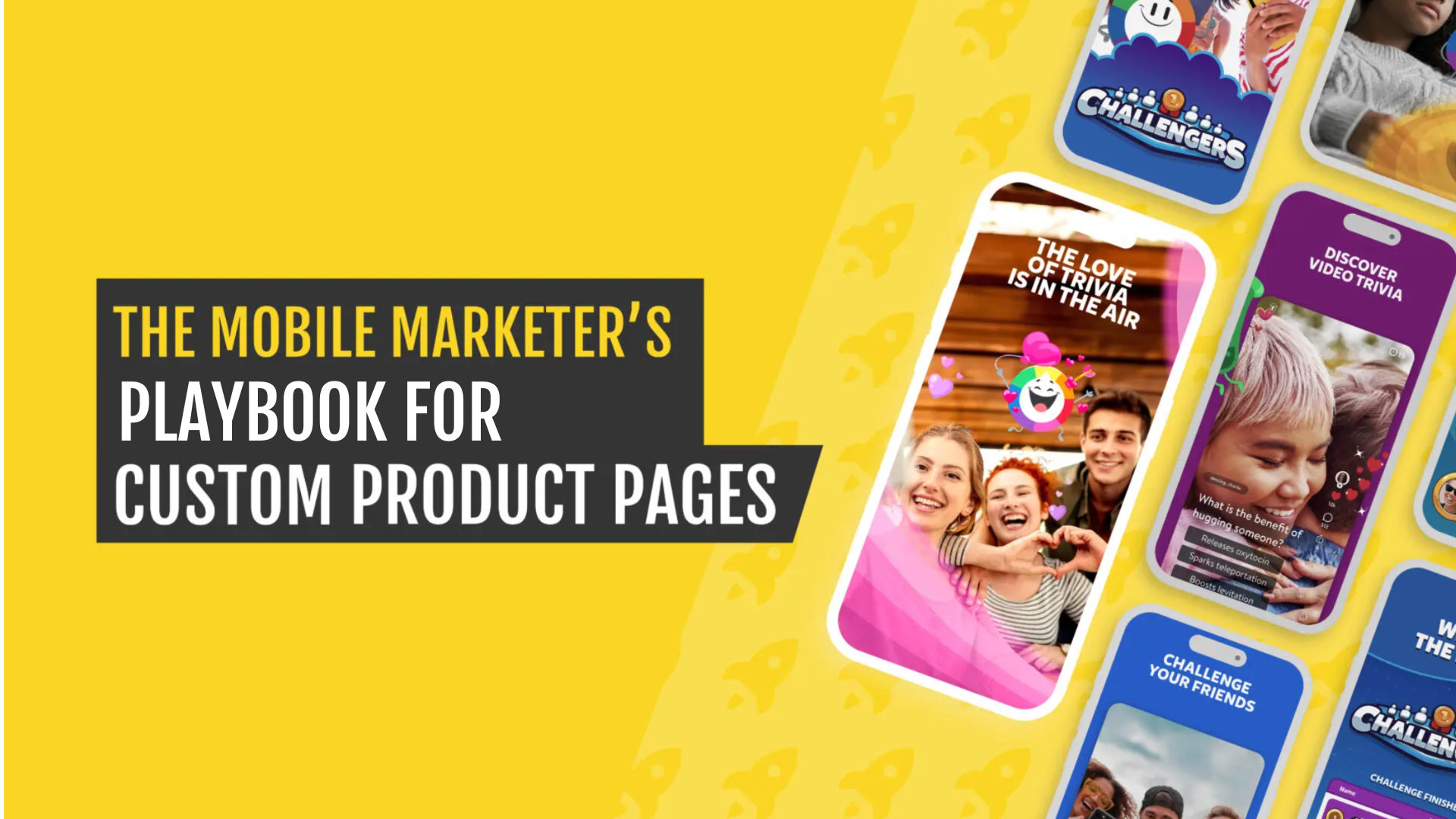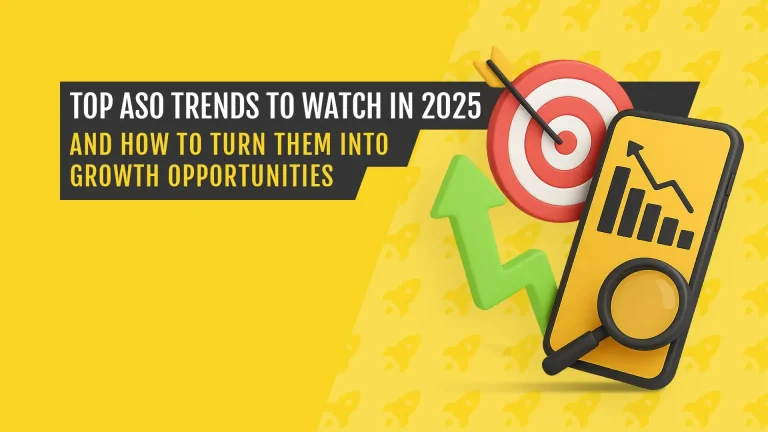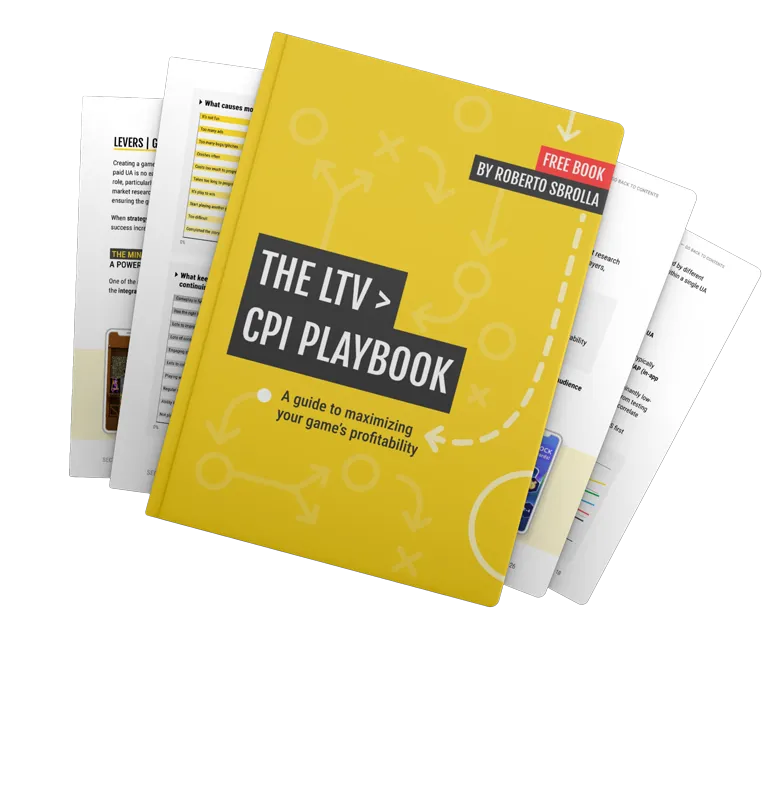Curious about custom product pages for mobile games but unsure if they’re the right fit for your app? Or maybe you’ve encountered challenges while trying to implement them in the past?
Let’s dive into how mobile developers, especially those in the gaming industry, can benefit from Custom Product Pages (CPPs) on the App Store.
Here’s what you’ll learn by the time you finish this article:
- What impact you can expect from CPPs
- Which verticals can experience the most significant uplift
- How to ideate and execute custom product pages effectively based on real-life examples
- How to select the best channel and understand the nuances of developing CPPs for each one
This article is beginner-friendly, but also offers advanced marketing managers and developers a fresh perspective on utilizing custom product pages.
What are Custom Product Pages?
A custom product page is Apple’s App Store equivalent of a web landing page. CPPs provide additional versions of your default app store product page, allowing you to tailor content to different audiences and better align with their intentions.
The purpose of a custom product page is to allow for different audiences to have a seamless experience, therefore optimizing the performance of paid user acquisition.
Each custom page can feature unique screenshots, promotional text, and app previews, and you can create up to 35 custom pages per app.
It’s important to note that CPPs don’t appear in direct search results on the App Store, but they can be highlighted on the Today, Games, and Apps tabs.
On Which Channels Can Custom Product Pages Be Used?
The most common channels for using custom product pages are Apple Search Ads (ASA) and Meta.
But you can also use CPPs with other acquisition channels, including your newsletter and SMS campaigns. When creating CPPs for these two major traffic sources, it’s important to consider the different nature of their traffic.
Custom Product Pages for Apple Search Ads
The most common use case for ASA involves identifying a few clusters of keywords and creating a unique custom product page for each cluster.
Putting in the right effort here can greatly enhance the Conversion Rate (CR), as the search results attract highly motivated traffic. This means that you’re targeting users who are searching with specific intents or phrases in mind.
If you can accurately visualize and match what people are searching for, your conversion rate will significantly improve.
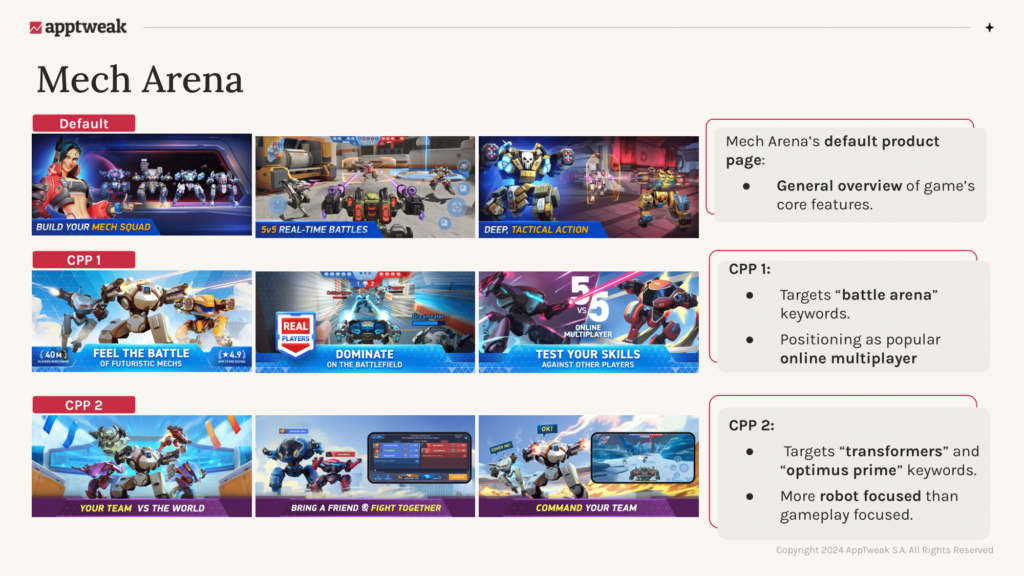
Custom Product Pages for Meta
Meta operates with a distinct user flow compared to search-based platforms. Here, users typically aren’t searching with specific terms in mind but are instead scrolling through their feeds.
The challenge is to align your store listing effectively with your ads, which necessitates a unique approach when creating a custom product page for Meta.
For games advertised on Meta, the emphasis should be on aligning store listings with ads that cater to different player motivations. You can test various motivators. In some cases, continue to tailor the CPP to specific user demographics, such as gender, age, and location.
Using Custom Product Pages to Track Installs
Another less obvious but practical use case for CPPs is tracking installs. This scenario is especially relevant for startups and smaller developers who may not have a Mobile Measurement Partner (MMP) yet but are interested in exploring the Apple Search Ads channel.
Without an MMP, access to detailed bottom-funnel data, such as keyword-level insights from Apple Search Ads, is unavailable. This restricts your ability to determine which keywords are most effective and which you should pause, information crucial for assessing channel profitability.
However, by using CPPs within Apple Search Ads campaigns, User Acquisition (UA) and App Store Optimization (ASO) practitioners can access crucial bottom-funnel metrics. Like proceeds, in-app purchases, and paying users via the App Store Connect Analytics. These metrics give you a valuable snapshot of your CPP efforts’ effectiveness.
Since this approach primarily aims to access bottom-funnel metrics rather than improving conversion rates, creating unique custom product pages isn’t necessary. You can effectively use the default app store product page as a CPP.
Who Can Benefit from Custom Product Pages?
Since Apple rolled out the CPP feature on the App Store in 2021, there’s been a lot of buzz. But has it truly lived up to its initial hype?
Our recent analysis using AppTweak revealed that 50% of the top 100 grossing games are employing custom product pages. This statistic emphasizes that CPPs have indeed become a critical component of paid UA strategies for many mobile game developers.
Games in categories such as casual, puzzle, match-3, trivia, casino, strategy, role-playing, merge, and RPG most commonly utilize CPPs. This makes sense, given that these games appeal to a broad audience with diverse motivations—from relaxation and stress relief to a pursuit of progression and achievements.
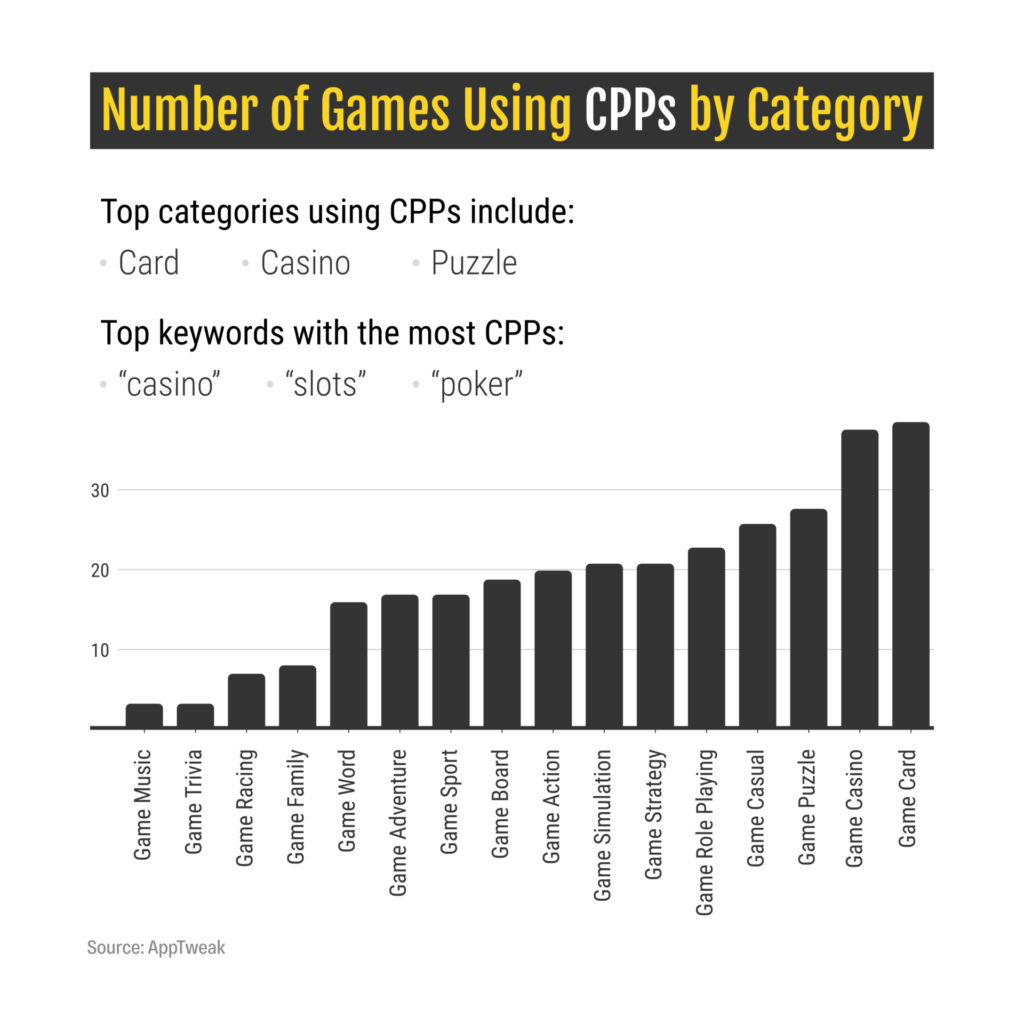
Speaking of expected impact, data from AppTweak shows a positive correlation between the use of CPPs and revenue per download in the gaming industry.
This trend occurs because games with high Lifetime Value (LTV) can afford the investment in the comparatively expensive Apple Search Ads and effectively integrate this channel with CPPs.

As expected, the largest uplift is visible in the top funnel metrics. Such as Tap Through Rate (TTR), Conversion Rate, and Impression-to-Install Ratio (ITI).

Let’s check out some of the most effective use cases for custom product pages within the mobile gaming segment.
Practical Use Cases for Custom Product Pages
Custom Product Pages Based on Player Motivators
Player motivators are key drivers behind why people play games and what keeps them engaged. Understanding these player motivations and archetypes is necessary for creating custom product pages that truly resonate with your target audience.
For instance, ‘thinkers’ are drawn to games that offer cognitive challenges and milestones, while ‘thrill seekers’ are attracted to excitement and quick rewards.
Let’s explore a few real-case examples from top-grossing games to see how this can be applied effectively.
To appeal to match-3 enthusiasts who enjoy merging and combining elements to progress in games, AppAgent produced custom screenshots for Merge Mansion by Metacore. These screenshots, particularly focused on the match-3 mechanism, are prominently featured in the first three images below.
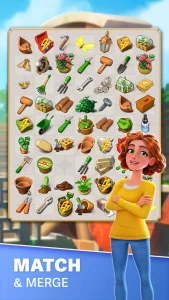



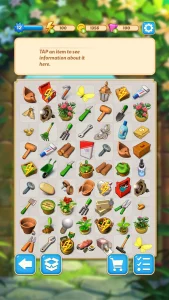
Here are the main keywords that were most likely used in the Generic campaign on ASA:

For comparison, below are Merge Mansion’s default screenshots on the App Store:
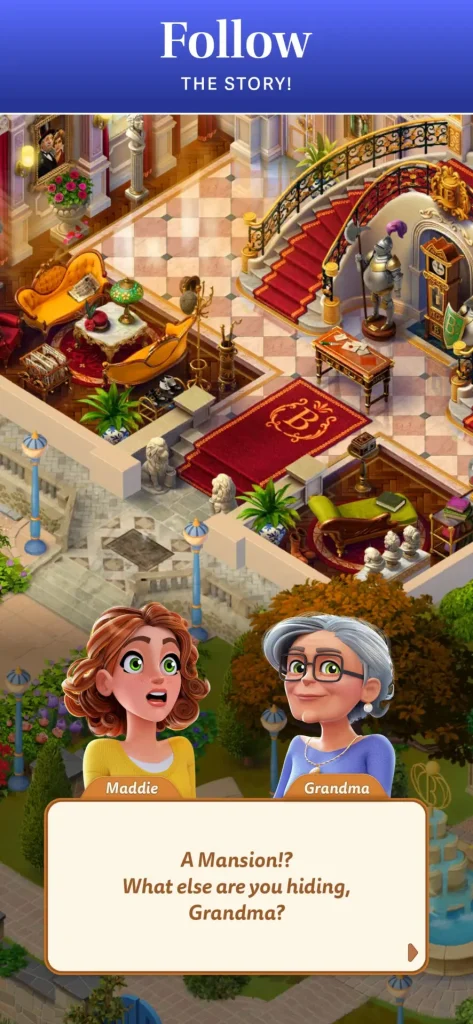




Within Apple Search Ads, Metacore probably established a separate ad group targeting keywords like ‘merge games’, ‘merge’, and ‘match 3’.
On the other hand, people interested in mystery or detective games would see completely different screenshots. Those which highlight the investigative aspect of the game.



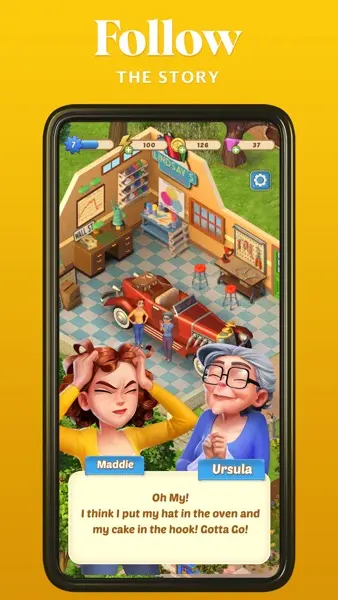

Here are the main keywords that were most likely used in the Brand campaign on ASA:
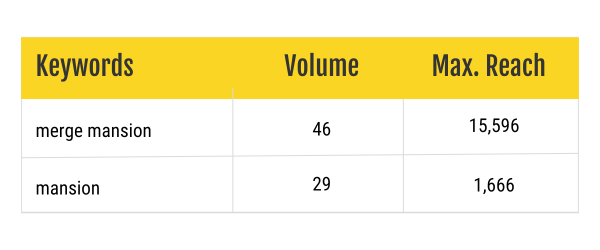
Another excellent example of CPP utilization comes from one of the most popular mobile games in the trivia category: Trivia Crack by Etermax.
By tweaking the messaging and visuals in its screenshots, Trivia Crack is likely trying to widen the range of keywords used in Apple Search Ads campaigns.





Here are the main keywords that were most likely used in the Generic campaign on ASA:

For comparison, here are some of Trivia Crack’s default screenshots on the App Store:

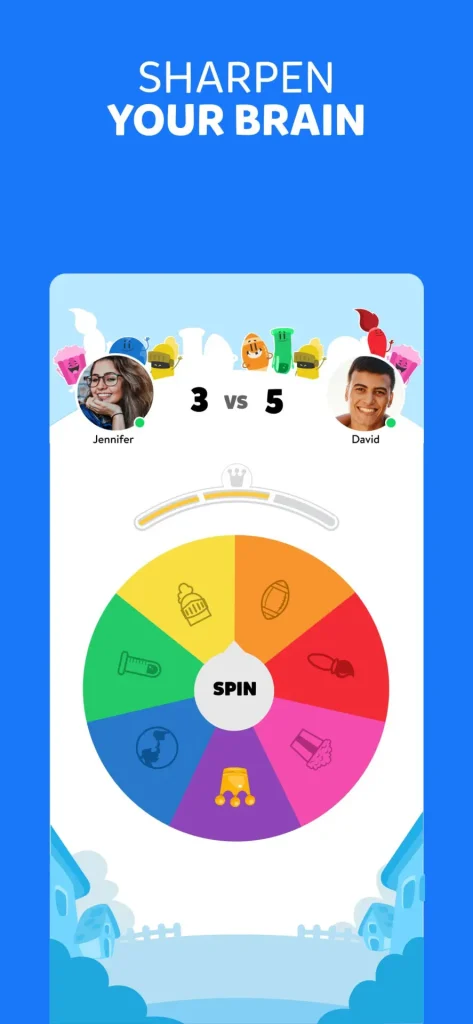

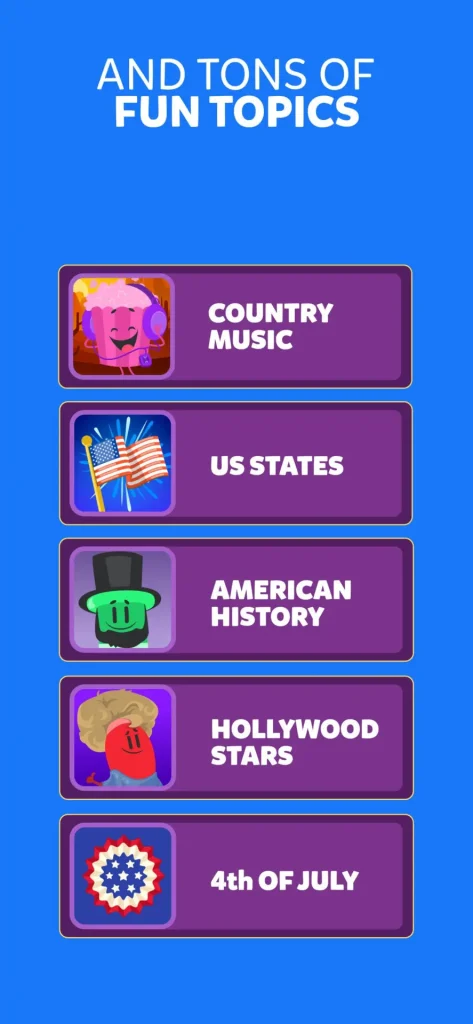
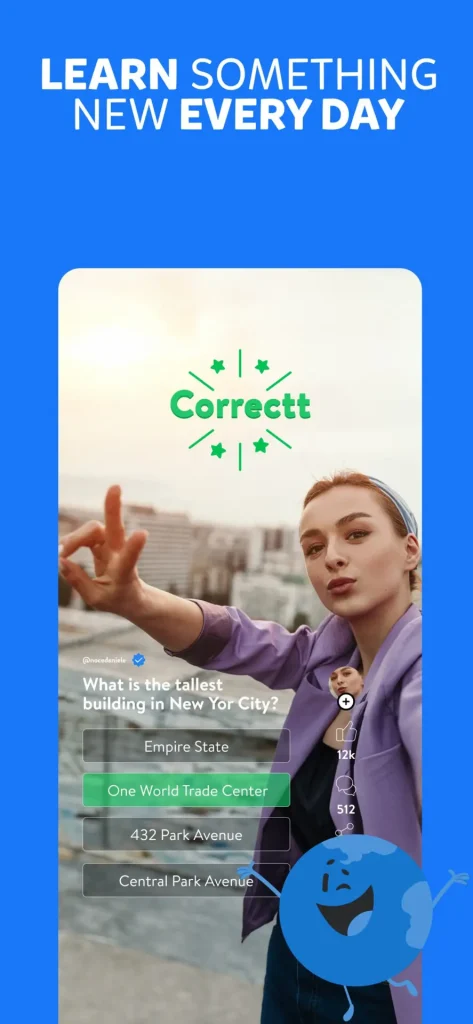
Custom Product Pages Based on User Personas
Another strategy involves segmenting your users by age and gender and tailoring the custom product page specifically for each audience.
For example, Trivia Crack targets older players by using photos of elderly users and highlighting in the text that the game is easy to play and beneficial for brain health.

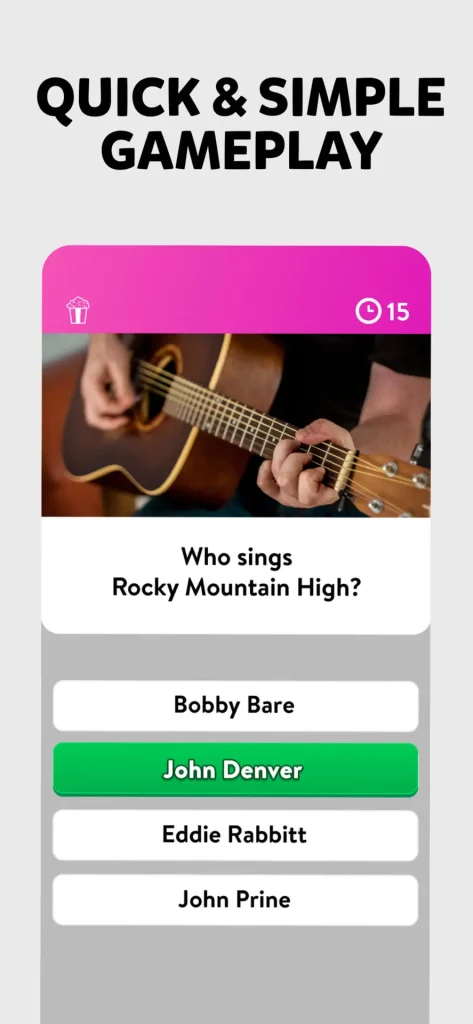
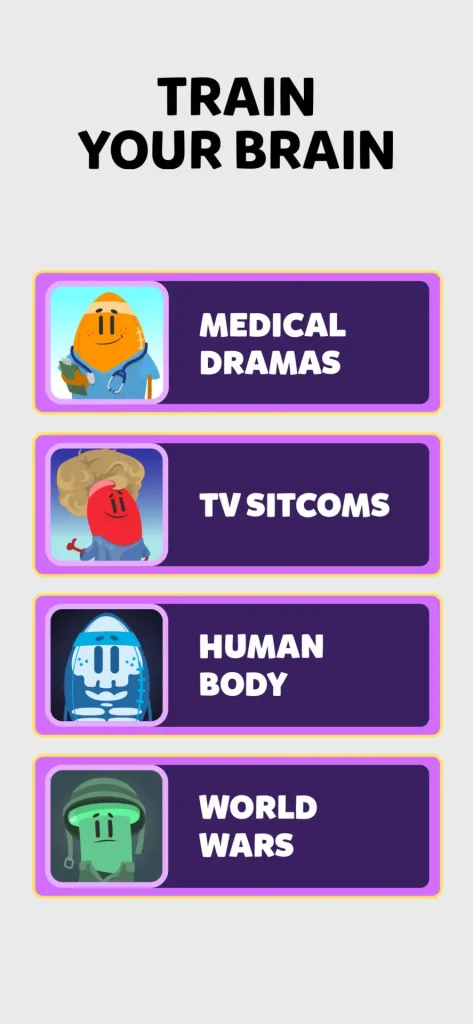

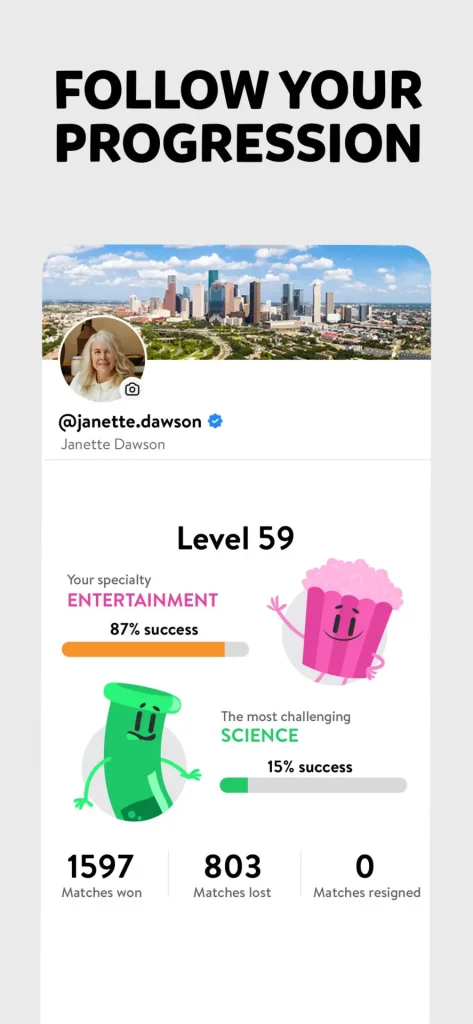
Custom Product Pages Based on Seasonality
CPPs not only allow you to target a specific audience or showcase a particular feature. They can also increase engagement and conversion rates by aligning with different seasons or holidays.
This is especially important for more established games, as staying relevant to user trends is essential. Take Trivia Crack, for instance, where custom product pages were created specifically for Valentine’s Day.
Keep in mind that excitement typically begins to build a few weeks before the holiday. So, it’s best to plan your seasonal activities well in advance.


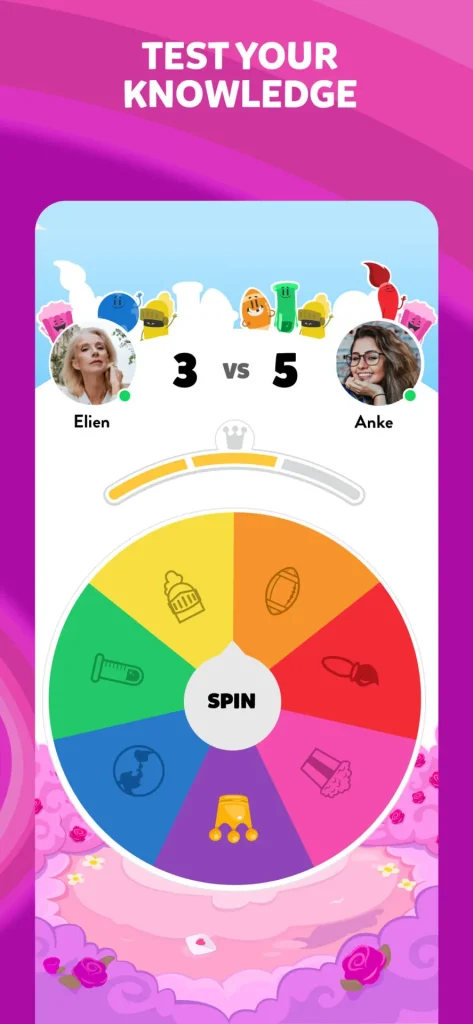

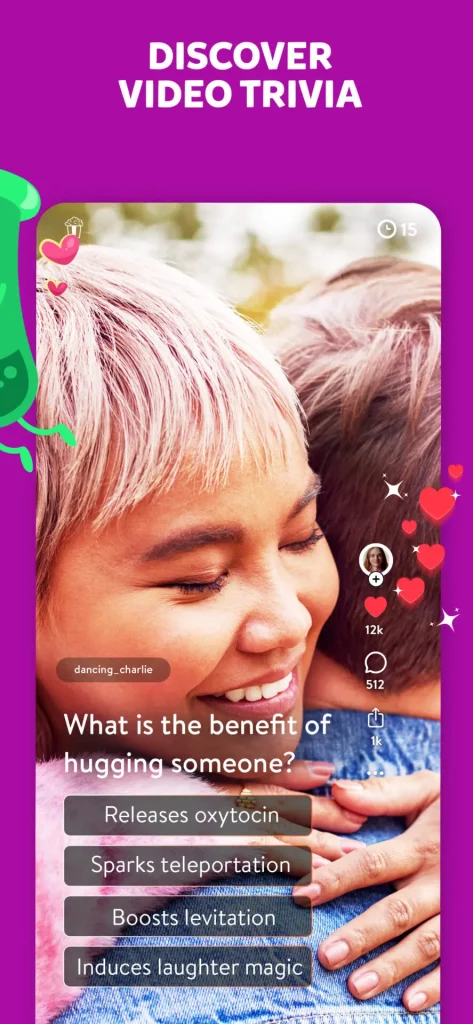
Custom Product Pages for Re-Targeting
Custom product pages are not only useful for increasing conversion rates with new users but also act as a valuable tool for re-engaging users who have previously uninstalled the game.
For example, if someone downloaded your game but later uninstalled it, CPPs can highlight new content that has been added since their last visit. Showcasing these updates on a custom product page can encourage users to give your app another try.
For example, Trivia Crack uses a custom product page to promote its new ‘social challenge’ feature, aiming to increase engagement and bring back former users.




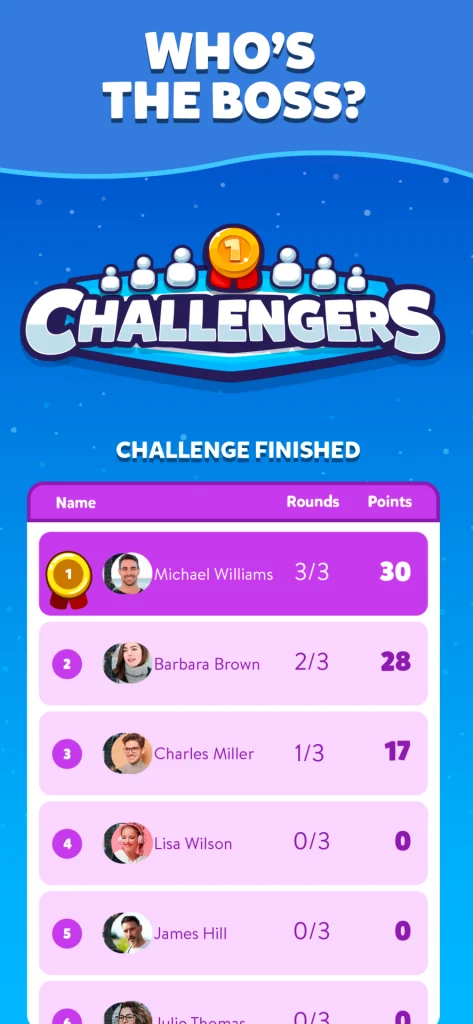
Another strategy for re-engagement could be to evoke emotions or incorporate humor into friendly reminders about the game.
In the CPPs shown below for Trivia Crack, the app’s first three screenshots aim to stir emotions by featuring images of a sad person and a sad character.
In the third screenshot, there’s a reward offered for returning (a ‘booster’), and in screenshots 4-6, they highlight new features, giving former players a compelling reason to revisit and explore the game again.

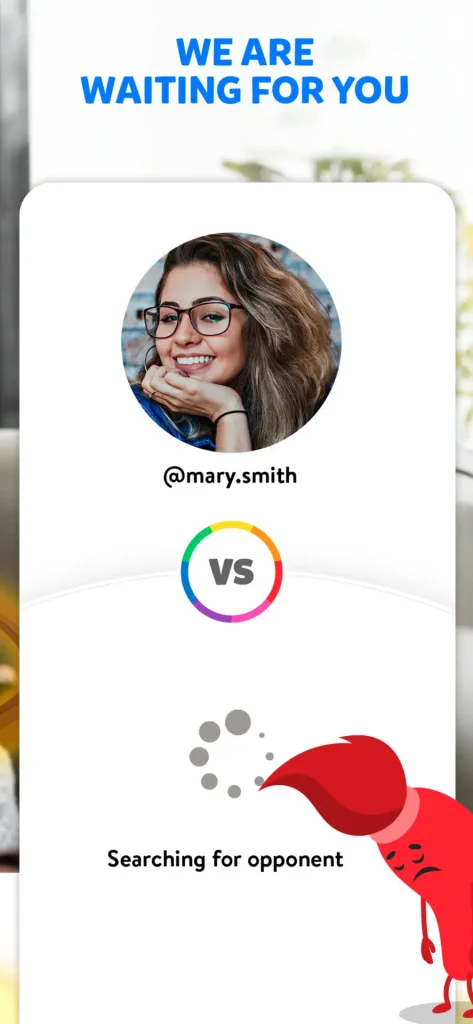

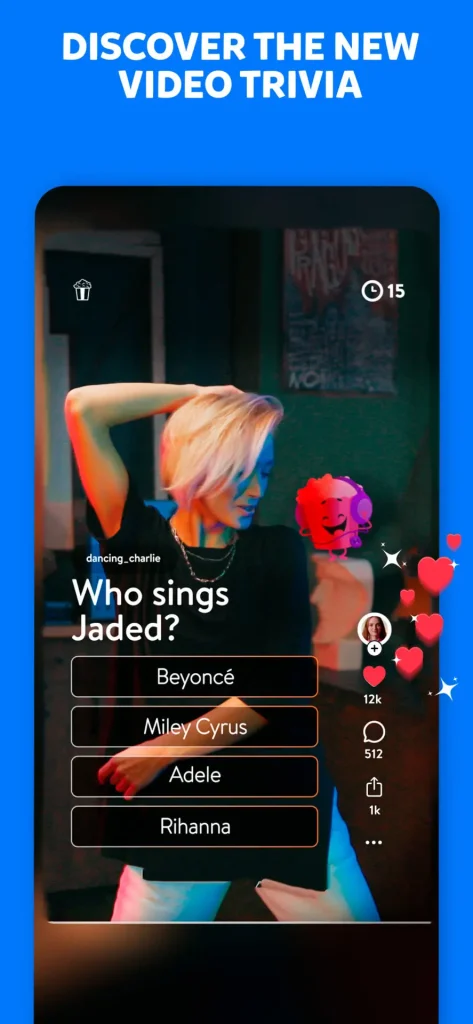
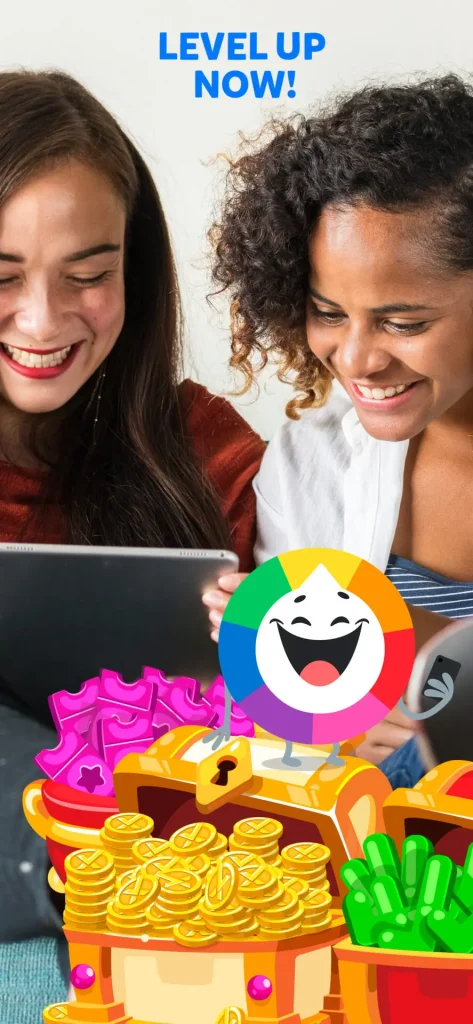
Custom Product Pages Connected to Mobile Ads
The primary aim of custom product pages is to streamline the user journey and reduce drop-off points.
A particularly effective approach on Meta involves linking ads to the Custom Store Listing by using the same characters in both the ad and the screenshots on the Store page. This approach has been shown to boost conversion rates by up to +55% and decrease the Cost Per Install (CPI) by about +30%.
The team at AppAgent was eager to put this strategy to the test with Sunrise Village, a popular simulation game by InnoGames. The video ad below highlights the mystery of Grandpa’s secrets.
When users click on the ad, the first App Store screenshots they see continue this narrative, featuring Grandpa and the mystery that surrounds him.

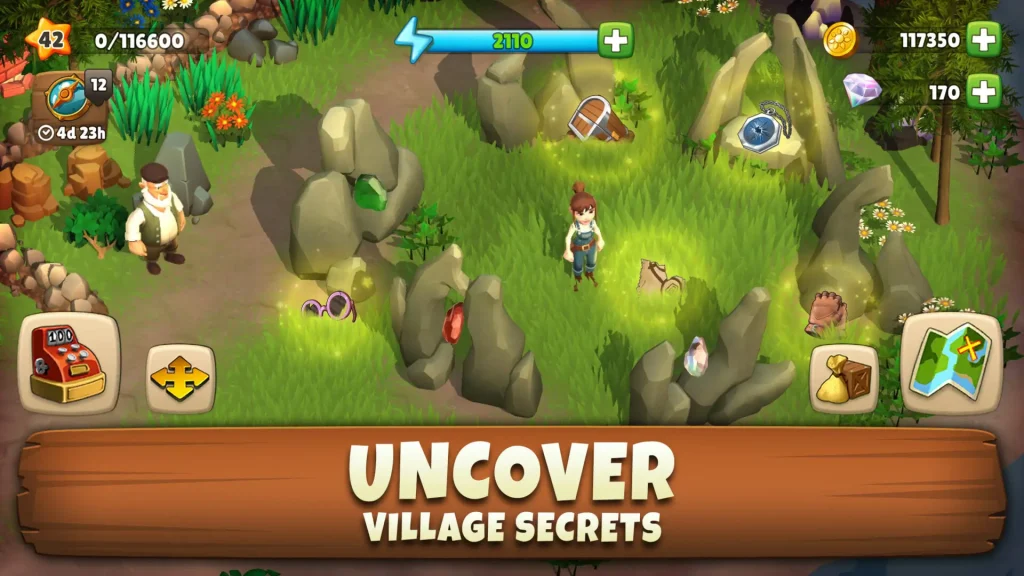
This approach can also be effective with User-Generated Content (UGC) ads. If UGCs are performing well for your game, you can select the most effective one, get permission from the actor featured to use their photo, and integrate it into your custom product page.
Are Custom Product Pages the Right Fit for My Mobile Game?
So far, we’ve been exploring the benefits of custom product pages, but an important question remains: If CPPs are such a valuable tool, why do only 50 of the top 100 grossing apps on the App Store use them?
Before you implement custom product pages for your mobile game’s App Store listing, consider these key points:
1. Suitability
CPPs are not always beneficial for every type of game. For example, hyper-casual games, which often lack diverse keyword clusters, may not see much benefit from using CPPs on Apple Search Ads. However, platforms like Meta or Snapchat are more versatile, and nearly any game can benefit from using CPPs there.
2. Investment of Time and Resources
Setting up even a single custom product page requires significant effort. Expect to invest about 5 to 10 hours of work, with coordination across various team members.
This process involves several steps: developing a hypothesis, conducting initial research, briefing the designer, handling production, submitting the custom product page for review, and setting up the campaign.
Even tasks that seem straightforward, such as submitting the CPP, can become time-consuming. This often involves several hours of work, dealing with rejections or technical issues on App Store Connect.
While these investments are often worth it in the long run, it’s important to carefully consider them before launching any initiatives with CPPs.
How Should I Approach the CPP Ideation Process?
The strategy for creating custom product pages often differs based on the channel they will be used in. For Apple Search Ads, we generally take four main approaches, including:
KEYWORD SEGMENTATION
Tailor your custom product pages to the game’s different features and potential audiences.
For example, as noted by AppTweak, Trivia Crack targets specific niches such as “trivia games” and broader categories like “IQ game” or “puzzle game.”
For example, as noted by AppTweak, Trivia Crack targets specific niches such as “trivia games” and broader categories like “IQ game” or “puzzle game.”
Audience Segmentation
Customize your CPPs to cater to different user demographics like gender, age, or other factors, particularly for games that appeal to a broad audience. Creating separate CPPs for each demographic segment can significantly boost engagement.
Incorporate Successful Creatives
Identify creative content that has performed exceptionally well on other channels and emulate its design, core message, and tone in your CPPs. Testing these versions against the default custom product page can help pinpoint the most effective strategies.
Competitor Review Analysis
Conduct preliminary research on competitor reviews to identify user concerns and preferences. Highlighting how your game effectively addresses these issues can serve as a unique selling point.
Additionally, observe and test design elements that have proven successful for competitors to further refine your own strategies.
Can Custom Product Pages be Used as a Replacement for PPO?
Some ASO and UA practitioners are opting to use custom product pages over Product Page Optimization (PPO) for conducting A/B tests. This is an interesting strategy as it allows you to target specific countries beyond just locales, which is a known limitation of PPO.
However, this method has several disadvantages. For example, custom product pages are only visible to users with iOS 15.2 or later, as that’s when the feature was introduced, which leaves us unsure about who is seeing the default pages.
Additionally, the performance between paid and organic traffic can differ greatly. Strategies that are effective for paid traffic may not translate well to organic traffic, and with Apple Search Ads, it’s challenging to distribute traffic evenly between the default page and CPPs. As a result, custom product pages often end up using a substantial portion of the advertising budget.
Despite these challenges, if a consistent trend is observed across various channels, it might be worthwhile to conduct a re-test with PPO to validate these findings.
A Brief Overview of Custom Product Pages
Where you can use CPPs:
- Main Channels: Apple Search Ads (ASA) and Meta.
- Less Popular Channels: TikTok, Snapchat, Ironsource, and Moloco.
- Unusual Case: As an alternative to MMPs, primarily for startups.
Main use cases for CPPs:
- Based on Player Motivators: Target individuals with varying reasons for playing, such as social interaction, mastery, or exploration.
- Based on User Personas: Segment users based on specific criteria like gender, age, or location.
- Based on Seasonal Events: Utilize CPPs to tap into holiday excitement and boost audience engagement.
- For Re-Targeting: Encourage users who have uninstalled the game to return by highlighting new updates or offering rewards for coming back, giving them a reason to reconsider the game.
- Connected to Ads: Create a cohesive user experience by aligning the main themes of your ads with your store listing, reducing drop-off points.
Before diving into CPPs, consider the following:
- Solid Hypothesis: Do you have a well-founded hypothesis for creating CPPs, such as catering to diverse features and distinct user segments? If not, the investment of time and money might not be worthwhile.
CPP Ideation Process:
- Audience Segmentation: Tailor your pages to specific user demographics to enhance engagement.
- Incorporate Successful Creatives: Use creative elements that have proven effective in other campaigns to enhance your custom product pages.
- Competitor Review Analysis: Study competitor strategies to understand what works and what doesn’t, and adapt your approach accordingly.
